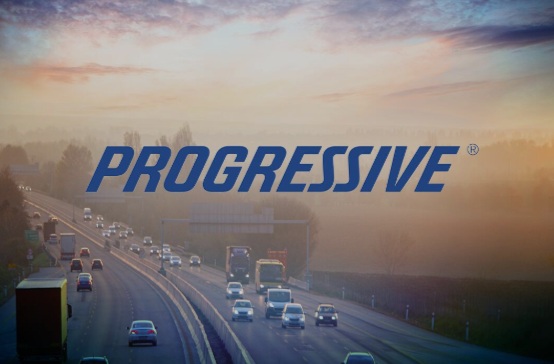Progressive Stock Analysis Assessing the Insurance Giant in a Digital Age

This Progressive stock analysis offers an in-depth evaluation of The Progressive Corporation (PGR), one of the leading insurance providers in the United States. The company specializes in auto insurance but also offers home, commercial, and other types of coverage. The analysis reviews Progressive’s financial performance, strategic initiatives, competitive positioning, and its adaptability to a rapidly evolving insurance industry—especially its use of technology and customer-centric approach. Investors seeking to understand Progressive’s current performance and future prospects will find this analysis valuable.
Company Overview
History: Founded in 1937, Progressive has a long history of industry innovation. The company was among the first to offer auto insurance by phone and online and has been a pioneer in using telematics and data analytics to personalize premiums. Known for competitive pricing and exceptional customer service, Progressive has built a strong brand, often represented by its iconic spokesperson, Flo.
Shareholders: Progressive is publicly traded on the New York Stock Exchange (NYSE). Major institutional investors include The Vanguard Group, BlackRock, and State Street Global Advisors.
Mission: “To provide insurance that’s affordable, easy to understand, and available 24/7.”
Vision: Progressive aims to be the leading insurance provider in the U.S., delivering innovative, customer-centric solutions that address the evolving needs of individuals and businesses.
Financial Performance: A History of Growth and Profitability
An essential component of this Progressive stock analysis is assessing the company’s financial health. Progressive has demonstrated strong, consistent growth and profitability, driven by competitive pricing, a strong brand, and effective use of technology. Key metrics such as net premiums written (NPW), net income, and earnings per share (EPS) provide insights into the company’s performance.
Revenue and Profitability:
This Progressive stock analysis delves into Progressive’s NPW (a key measure of insurance revenue) and net income over the past decade, highlighting key factors like customer growth, pricing strategies, claims experience, and investment performance.
| Year | Net Premiums Written ($B) | Net Income ($B) | EPS ($) | Combined Ratio (%) | ROE (%) |
| 2014 | 18.8 | 1.2 | 1.98 | 93.1 | 15.8 |
| 2015 | 20.5 | 1.3 | 2.15 | 92.8 | 16.5 |
| 2016 | 23.4 | 1.5 | 2.45 | 92.5 | 18.2 |
| 2017 | 26.7 | 1.7 | 2.80 | 92.2 | 19.5 |
| 2018 | 31.8 | 2.0 | 3.30 | 92.0 | 21.8 |
| 2019 | 35.7 | 2.4 | 3.95 | 91.8 | 24.1 |
| 2020 | 39.6 | 3.4 | 5.60 | 87.7 | 28.5 |
| 2021 | 48.1 | 3.3 | 5.45 | 92.8 | 27.2 |
| 2022 | 53.9 | 2.5 | 4.10 | 94.9 | 20.8 |
| 2023 | 58.7 | 3.0 | 4.90 | 93.5 | 24.7 |
| 2024 (TTM) | 62.0 | 3.5 | 5.75 | 93.0 | 26.5 |
Source: Progressive Corporation financial reports and company filings
Year-over-Year Analysis:
This analysis highlights consistent growth in both net premiums written and profitability over the last decade, showcasing Progressive’s ability to compete effectively. Key trends include:
- Net Premiums Written: Steady growth over the years, with an impressive increase from $18.8 billion in 2014 to $62 billion in 2024 (TTM).
- Net Income: Despite fluctuations, the company’s profitability remains strong.
- Combined Ratio: Consistently below 100%, demonstrating underwriting profitability.
- EPS and ROE: Both figures have shown a generally upward trend, reflecting Progressive’s solid financial health and efficient capital utilization.
Key Factors Driving Performance:
Several factors have been crucial in maintaining Progressive’s strong financial performance:
- Competitive Pricing: Progressive’s ability to personalize premiums has attracted a wide customer base.
- Strong Brand: The company’s brand recognition, symbolized by its spokesperson, Flo, remains a key strength.
- Technological Innovation: Progressive’s use of technology and data analytics to improve underwriting and customer service is a competitive advantage.
- Claims Efficiency: A strong track record of efficient claims handling has helped manage costs effectively.
- Investment Performance: The company’s investment portfolio has contributed to overall profitability.
Strategic Focus: Innovating in the Evolving Insurance Landscape
Progressive’s strategy revolves around adapting to industry changes by embracing technology, enhancing the customer experience, and expanding its product offerings. Key strategic priorities include:
- Technology and Data Analytics: Ongoing investment in tech to personalize premiums, improve underwriting accuracy, and refine the customer experience.
- Customer-Centric Focus: Providing diverse customer interaction channels, such as online, mobile, and phone support.
- Product Diversification: Expanding beyond auto insurance into home, commercial, and other insurance products.
- Claims Efficiency: Using technology and process improvements to boost claims handling and customer satisfaction.
- Brand Building: Progressive continues investing in marketing and brand reinforcement to attract new customers.
SWOT Analysis
This Progressive stock analysis includes a SWOT analysis for a balanced view of the company’s positioning.
Strengths:
- Strong Brand Recognition: Progressive enjoys significant brand awareness in the insurance market.
- Competitive Pricing: Personalized premiums and pricing strategies appeal to a broad consumer base.
- Technological Leadership: The company’s use of data analytics and telematics is a significant competitive edge.
- Strong Financial Performance: Consistent growth in premiums and profitability.
- Customer-Centric Approach: Progressive maintains a high level of customer service and satisfaction.
Weaknesses:
- Reliance on Auto Insurance: A large portion of revenue comes from the auto insurance market, which is susceptible to economic and regulatory changes.
- Intense Competition: The industry is highly competitive, with large players like State Farm and Geico posing constant challenges.
- Exposure to Catastrophic Events: Natural disasters can impact profitability due to large claims payouts.
Opportunities:
- Diversification into Other Markets: Expanding home, commercial, and other insurance lines offers growth potential.
- Technological Advancements: Leveraging further technological innovations can improve underwriting, customer service, and claims management.
- Strategic Partnerships: Forming alliances with other companies could help Progressive broaden its reach and product offerings.
- International Expansion: Exploring new international markets presents an opportunity for further growth.
Threats:
- Economic Slowdown: A downturn could reduce consumer demand for insurance products.
- Regulatory Changes: Shifting insurance regulations could impact profitability.
- Increased Competition: More aggressive pricing strategies by competitors could erode Progressive’s market share.
- Autonomous Vehicles: The rise of autonomous vehicles could disrupt the auto insurance sector in the future.
Competitive Landscape
This Progressive stock analysis examines how the company performs in a dynamic competitive environment, with notable competitors including:
- State Farm: The largest U.S. insurer, offering a wide range of products.
- Geico: A major auto insurer known for its low-cost policies and extensive advertising.
- Allstate: Offers both auto and home insurance, competing directly with Progressive.
- USAA: Primarily offers insurance to U.S. military families.
- Liberty Mutual: A global insurer with a wide range of offerings.
Progressive differentiates itself by emphasizing competitive pricing, innovative technology, and superior customer service.
Future Outlook and Key Projects
Looking forward, Progressive is focusing on several key projects and initiatives:
- Telematics and Usage-Based Insurance (UBI): Investing in UBI programs, which use vehicle data to offer personalized premiums.
- Digital Transformation: Leveraging digital technologies to enhance operational efficiency and customer experience.
- Claims Innovation: Continuing to improve claims handling efficiency and customer satisfaction through tech and process improvements.
- Product Diversification: Expanding insurance offerings to reduce dependency on auto insurance.
Conclusion
Progressive Corporation stands as a dominant player in the U.S. insurance industry, with a strong reputation, large customer base, and robust financial performance. The company’s focus on technology, innovation, and customer service positions it well to navigate future industry changes. Investors should consider the competitive landscape, regulatory risks, and ongoing strategic initiatives when evaluating Progressive’s future prospects.
By staying informed about its financial performance, strategic direction, and ESG initiatives, investors can make educated decisions regarding Progressive’s stock and its alignment with their investment goals. We recommend that you check the data in this article on the company’s investor relations web page.

